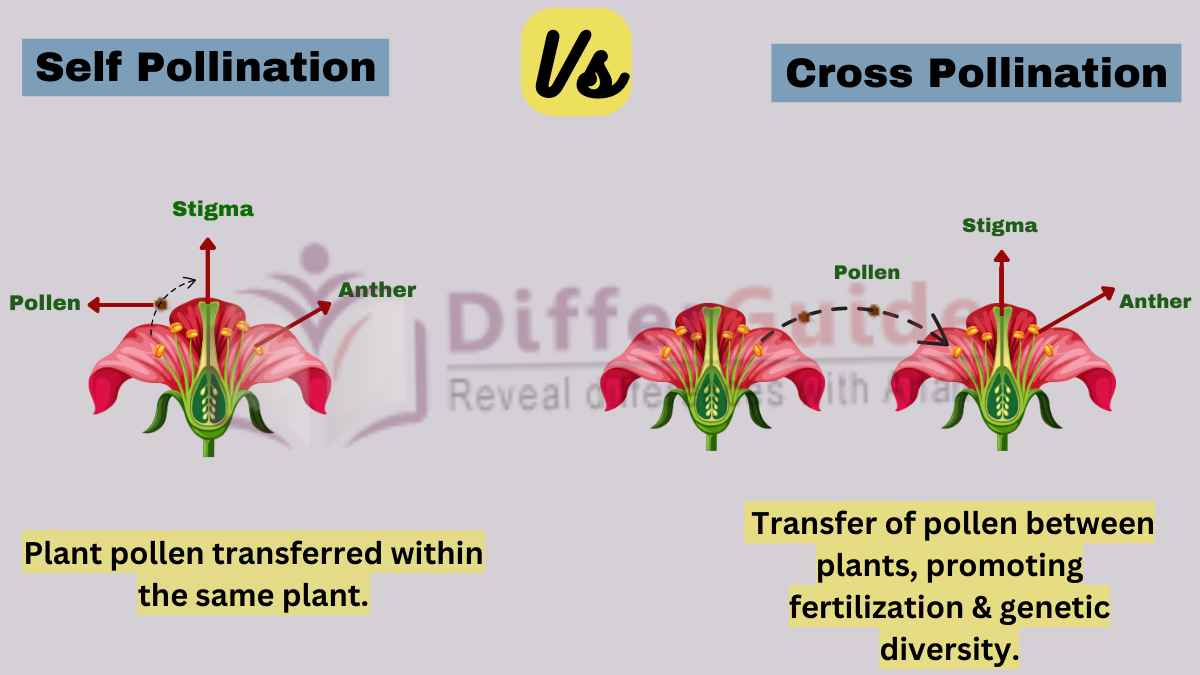The primary difference between self pollination and cross pollination is that, Self-pollination occurs within the same flower or between flowers of the same plant, while cross-pollination involves the transfer of pollen between different flowers or plants.

What is Self Pollination?
Self-pollination is a type of pollination where pollen from the male reproductive organ of a flower (anther) fertilizes the female reproductive organ (stigma) of the same flower or another flower on the same plant.
It does not involve the transfer of pollen between different plants and occurs within a single plant, promoting genetic consistency.
What is Cross Pollination?
Cross-pollination is a natural process in plants where pollen is transferred from the male reproductive organs of one flower to the female reproductive organs of another flower of the same species.
This can occur through various means, such as wind, insects, birds, or other animals. Cross-pollination plays a crucial role in enhancing genetic diversity, promoting healthier and more resilient plant populations.
Self Pollination vs Cross Pollination
The key difference between self-pollination and cross-pollination is given below:
| Self-Pollination | Cross-Pollination | |
| Definition | Transfer of pollen from the anther to the stigma of the same flower or genetically identical flowers. | Transfer of pollen from the anther to the stigma of different flowers or genetically different plants. |
| Source of pollen | Same flower or genetically identical flowers. | Different flowers or genetically different plants. |
| Mechanism | Pollen transfer occurs within the same flower or between flowers of the same plant. | Pollen transfer occurs between flowers of different plants. |
| Genetic Variation | Limited genetic variation since the same genetic material is involved. | Increased genetic variation due to the combination of genetic material from different plants. |
| Types of plants | Common in many self-pollinating plants, including certain crops like peas and wheat. | Common in cross-pollinating plants, including most flowering plants and many agricultural crops. |
| Reproduction | Ensures reproduction even in the absence of pollinators. | Requires the assistance of pollinators like insects, birds, or wind for successful fertilization. |
| Advantages | More reliable reproduction, protection against genetic variations, and stable traits. | Increased genetic diversity, beneficial for adaptation to changing environments, and potential for hybrid vigor. |
| Disadvantages | Dependency on external factors like pollinators, the lower guarantee of successful fertilization. | Dependency on external factors like pollinators, lower guarantee of successful fertilization. |
| Examples | Self-pollinating plants: tomatoes, peas, wheat.. | Cross-pollinating plants: apple trees, roses, sunflowers. |
